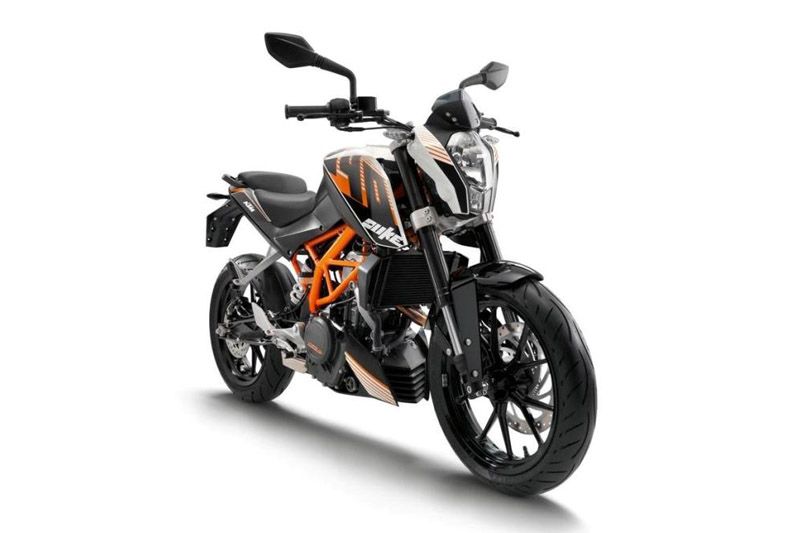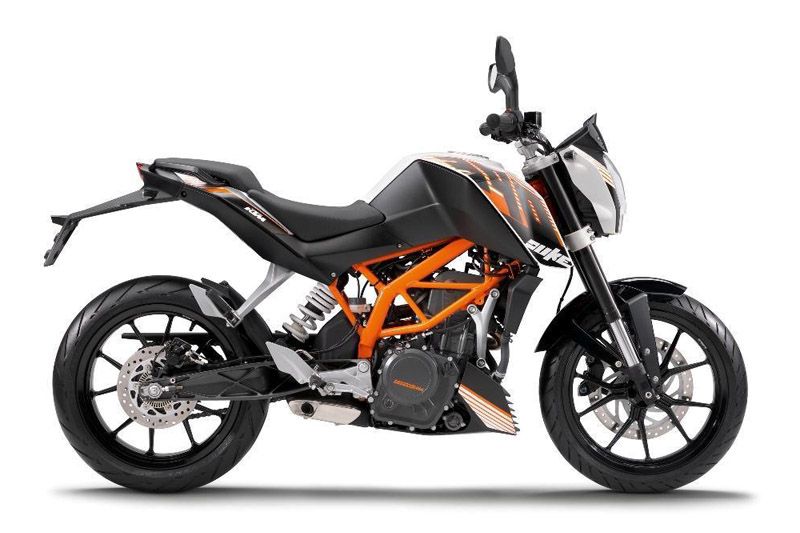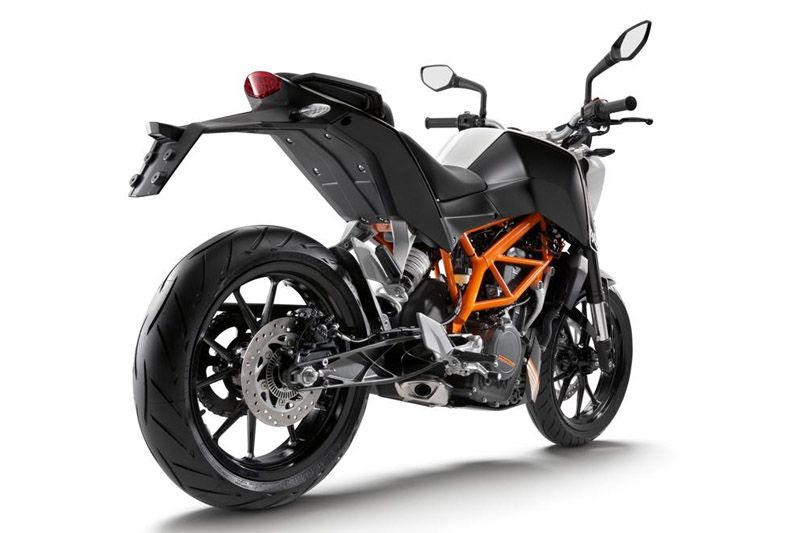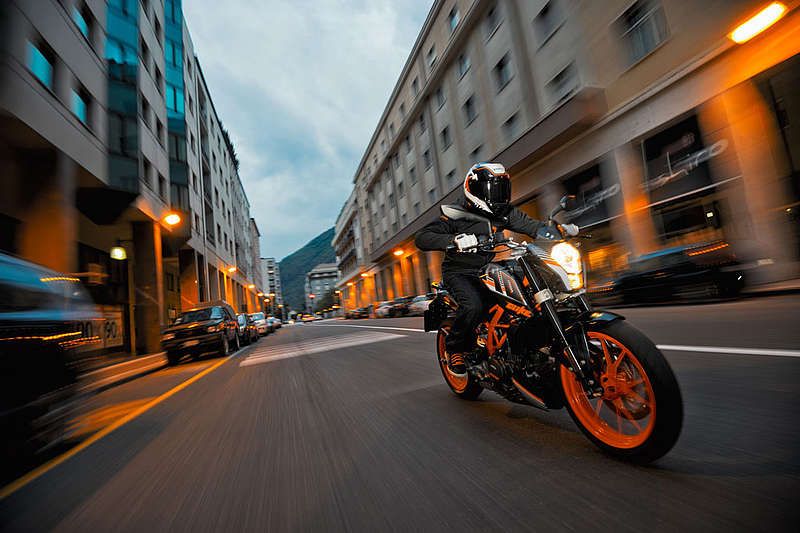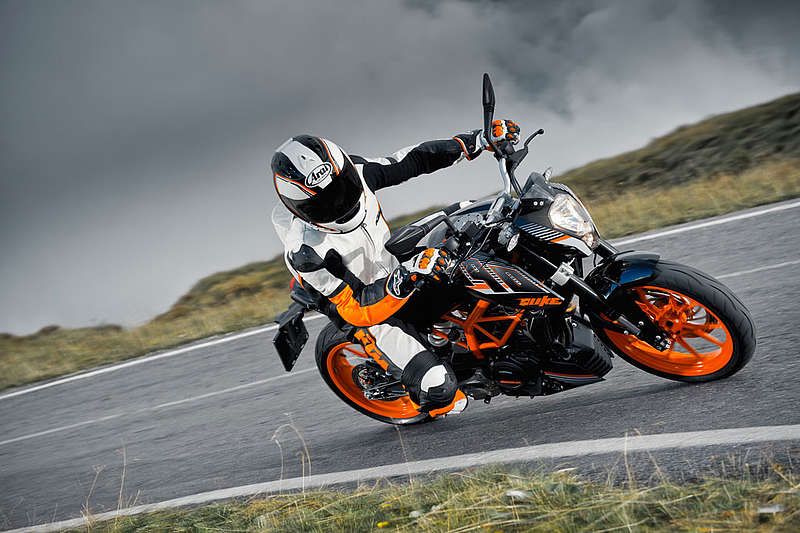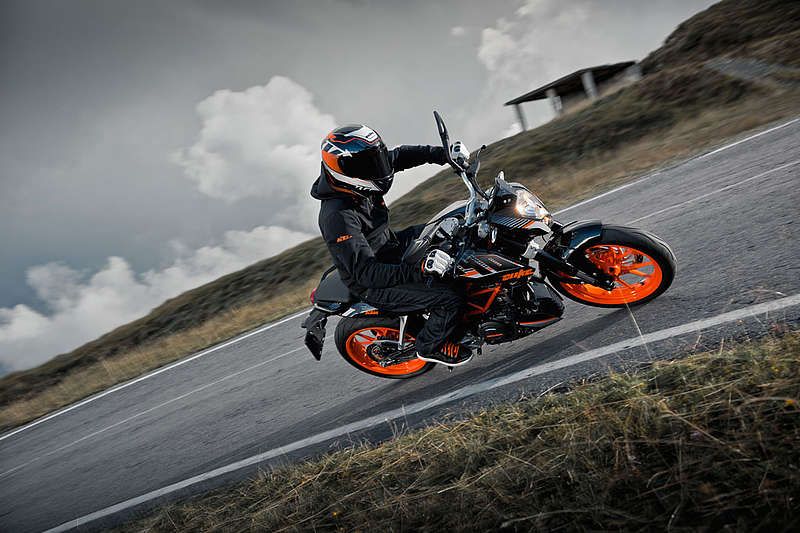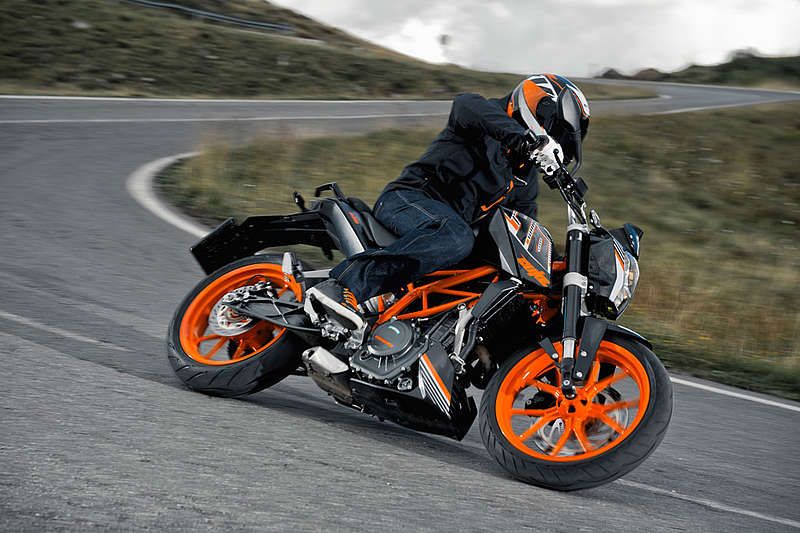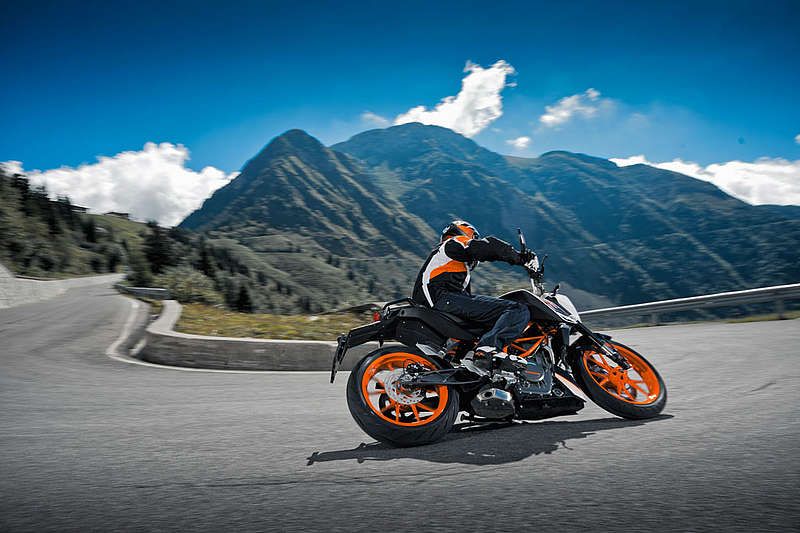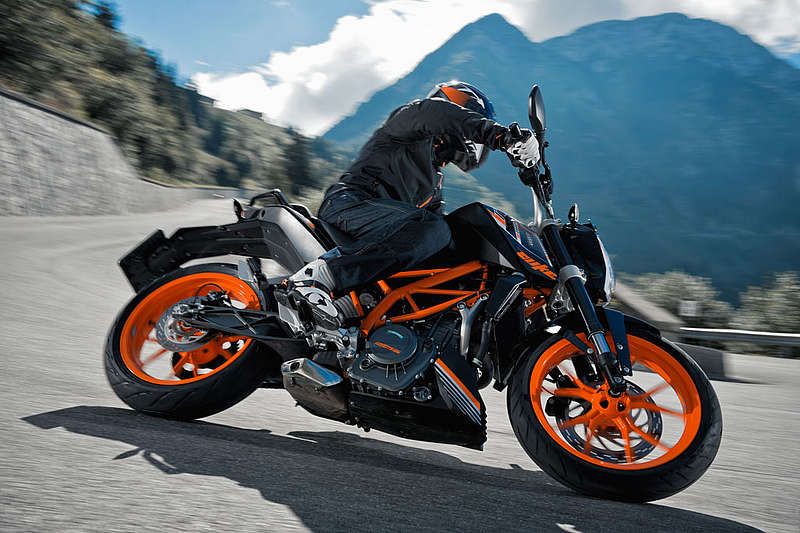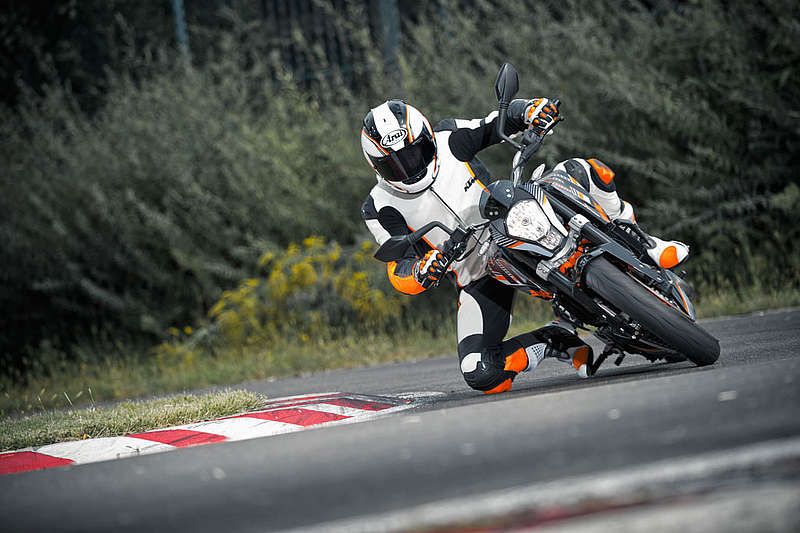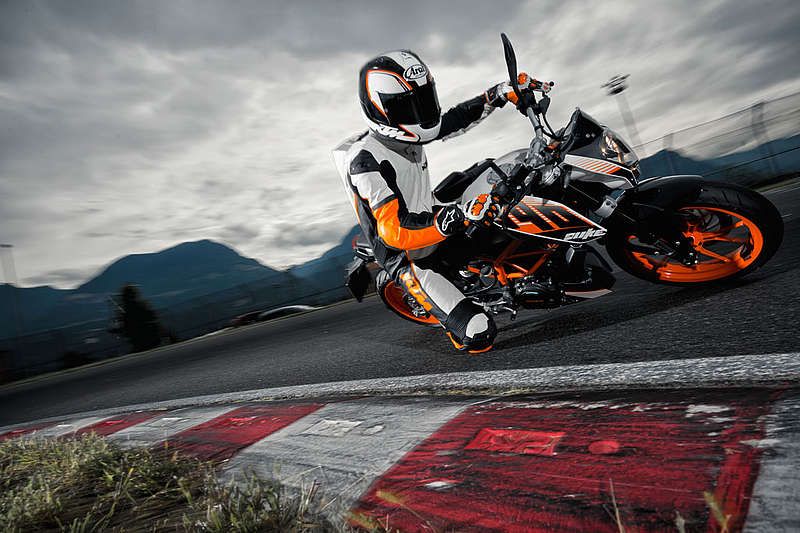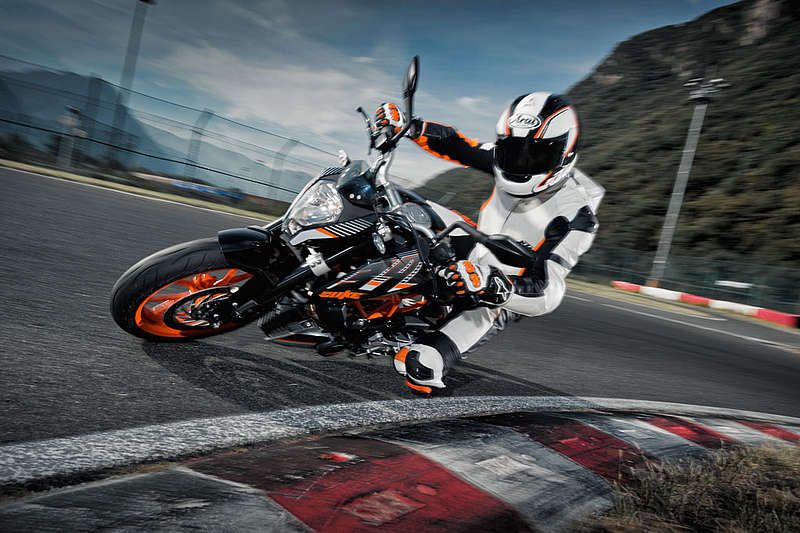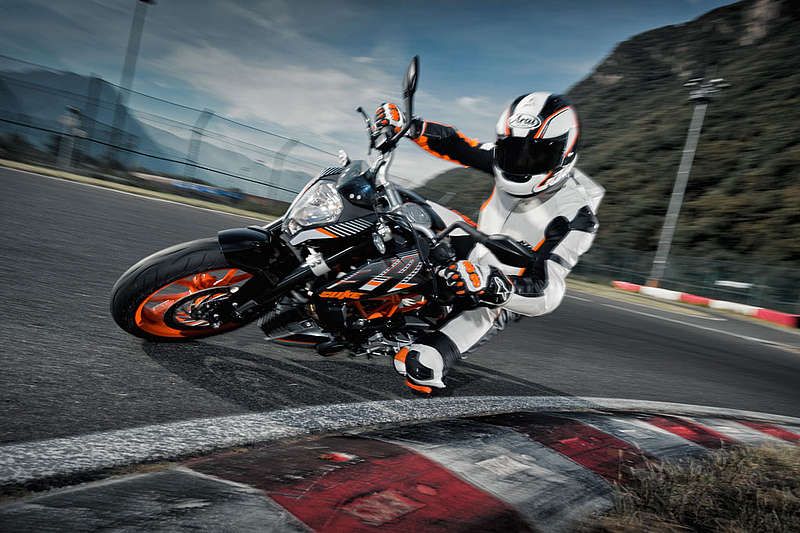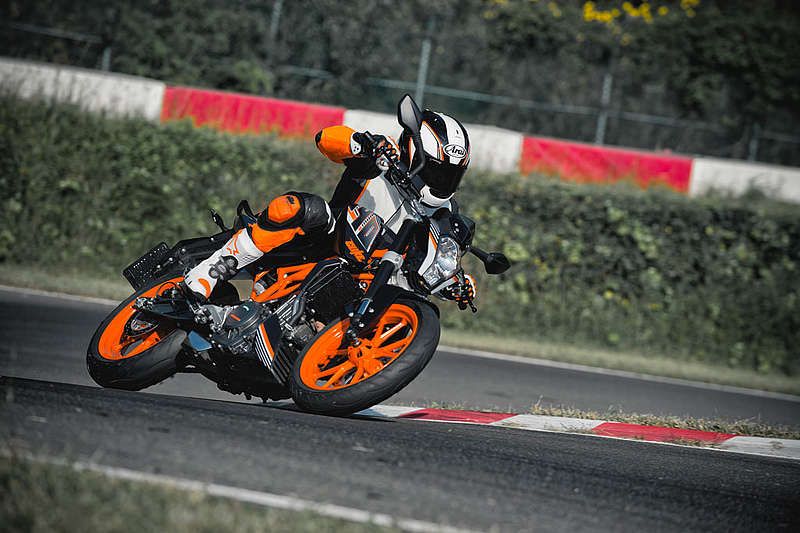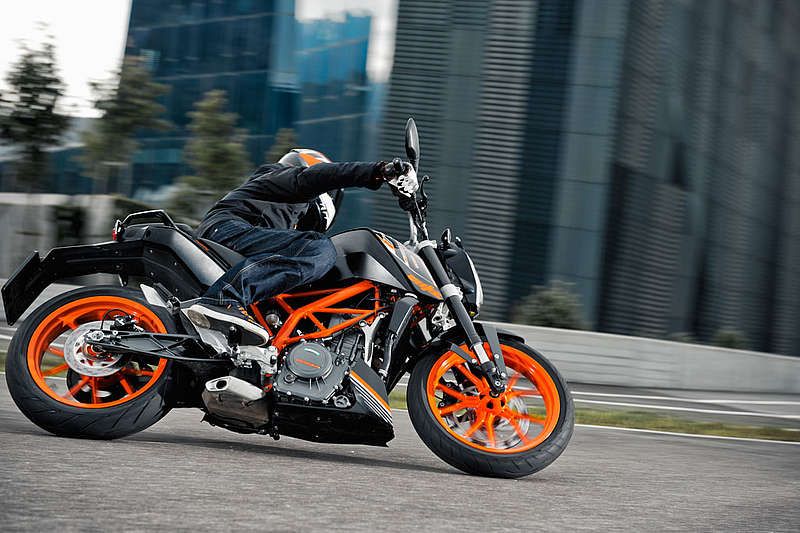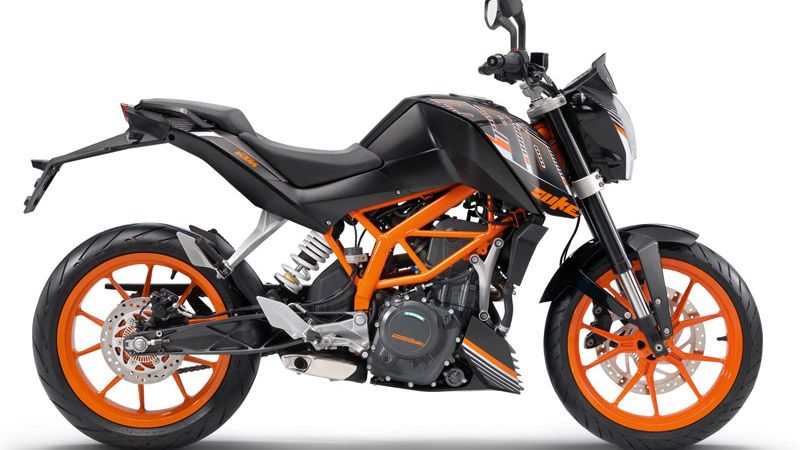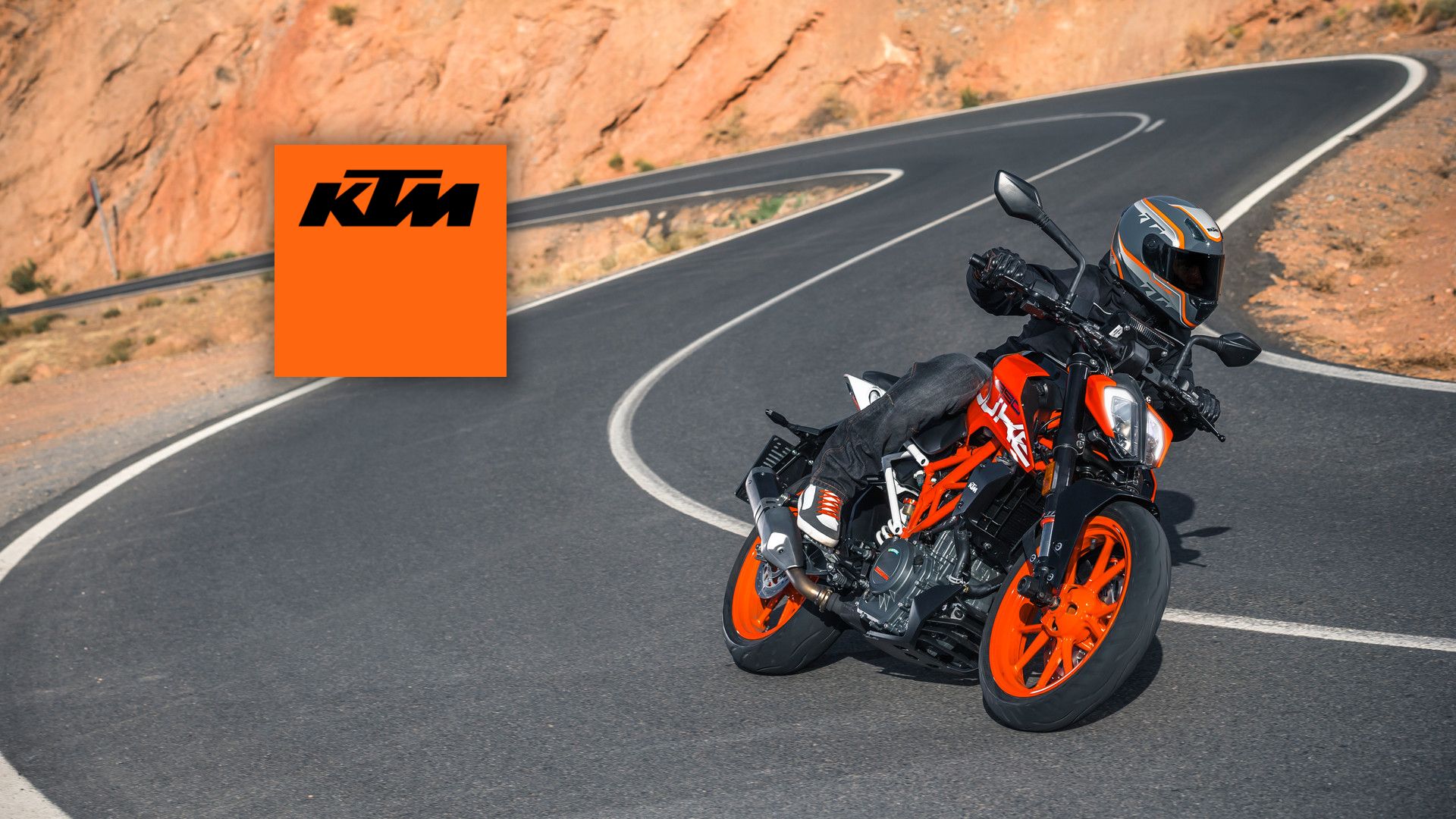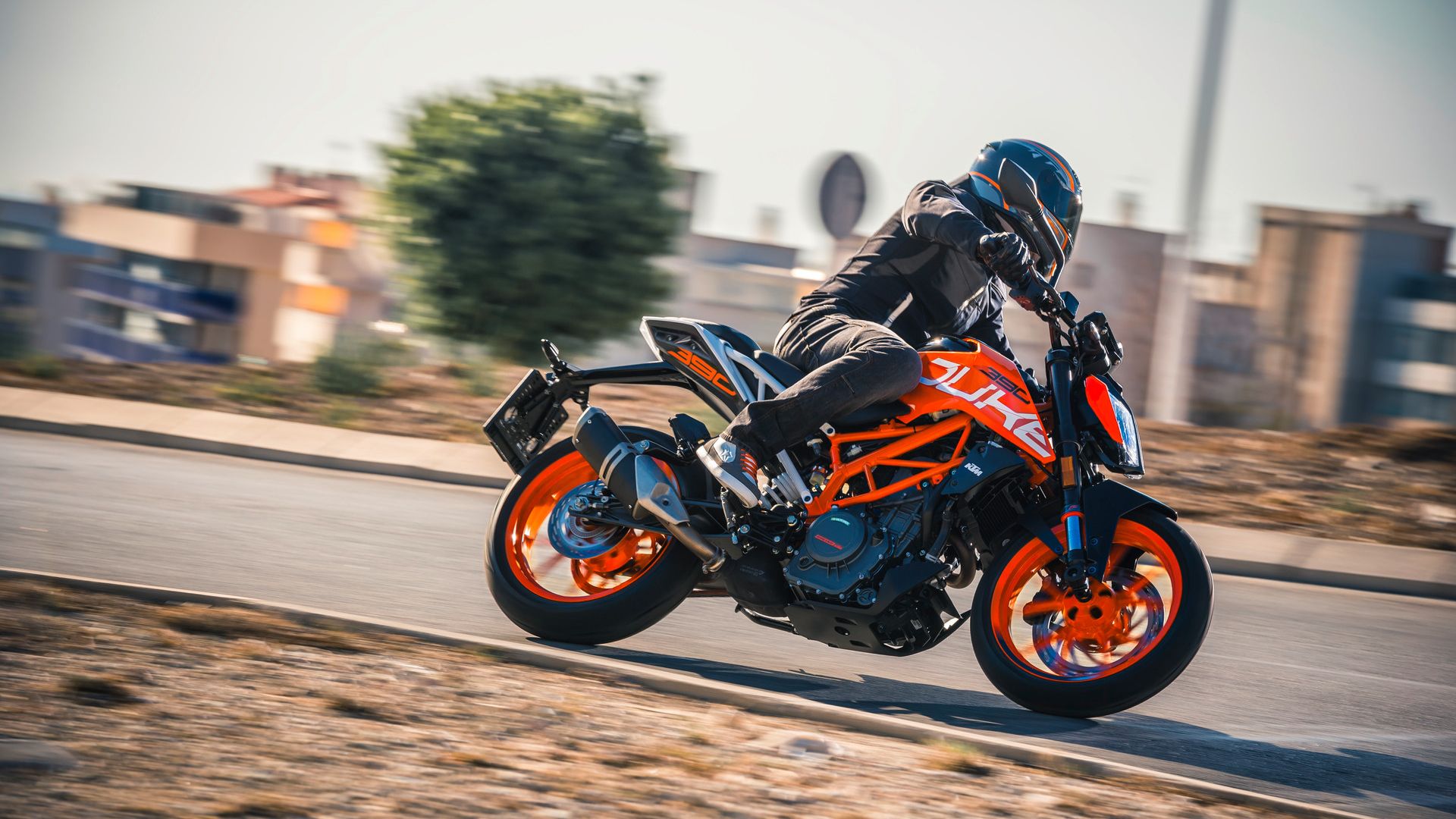When talking about KTM->ke1954's 390 Duke -- the smallest Duke->ke3018 available in the U.S. market -- everyone within my earshot who has ridden it says the same thing, that's it is fun to ride. That's no less applicable in 2017 as it was in previous MYs.
Looking at it spec-wise, it looks like a good entry-level bike and a sporty around-town bike -- which it is -- but it is also a very freeway-capable bike making it a choice for commuting and just plain having fun. Experienced riders like it because it is lightweight and easy to throw around, it has awesome power and torque for a single-cylinder engine and it is surprisingly smooth at highway speeds.
Made by Bajaj->ke3435, a manufacturer in India, and rebranded by KTM, I wasn't expecting much from the 390 Duke. Boy, was I surprised.
Continue reading for my review of the KTM 390 Duke.
2015 - 2016 KTM 390 DUKE
- Make: Array
- Model: 2015 - 2016 KTM 390 DUKE
- Engine/Motor: 1-cylinder 4-stroke engine, water-cooled
- [do not use] Vehicle Model: Array
Design
One of the few manufacturers offering a naked->ke5317 entry-level bike (the Honda CB->ke2813300F comes to mind), KTM gave the 390 Duke plenty of new-user-friendly features. Among the illuminated controls, find a kickstand warning light, gear indicators and a shift warning light -- all useful information for folks new to two wheels.
While some folks find the plastic body panels give the RC 390 a "cheap" feel, the 390 Duke feels like a solid machine -- lightweight, but solid. I normally expect power to be better at the low range on a single-cylinder engine, but the 390 Duke is strong in the mid-range and keeps on giving right up to the rev limiter.
Chassis
“Agile and responsive” are words that I hear tossed around with abandon around Duke riders, and most of that is due to the frame design. KTM started with a lightweight tubular frame that keeps the bulk of the weight around the center of gravity. The bike weighs in at only 306.4 pounds without liquids and most of that weight is concentrated around the engine, leaving it nimble and eager to respond to pressure on the bars.
It may have a small engine, but the suspension is set up for big-boy maneuvers. KTM used inverted, 43 mm WP forks to stiffen up the front end for predictable tracking in the corners, and a WP monoshock on the stiff-and-stable, lightweight swingarm. Suspension travel is a generous 5.9 inches front and rear, and it shows the Duke's dirt bike->ke295 roots. Bottom line here is, the suspension is tuned for sporty riding with plenty of travel for comfort on less-than-ideal roads.
KTM went with top-shelf tires for this ride, and the 17-inch rims sport Metzeler tires. I would call the tire profiles “mid-range” at 110 mm wide up front and only 150 mm in the back. Kinda small, but they aren't building a drag bike after all.
The Duke boasts an impressive brake pedigree, with Bosch and Brembo as the parents. A 300 mm disc and four-piston Brembo caliper binds the front wheel, and a 230 mm disc and single-piston caliper binds the rear. Perhaps bind is the wrong word – the Bosch 9MB ABS monitors wheel speed and moderates the brakes to prevent skids, and it can be disabled if you prefer not to use such newfangled contraptions.
Drivetrain
The engine is a little on the small side at 373 cc, but the liquid-cooled, fuel-injected single-cylinder engine gives a good account for itself with a 43-horsepower maximum output – not bad for an engine that weighs just a hair shy of 80 pounds. Part of this power comes from a NaCaSil cylinder coating, and part comes from the RC8 R->ke3147-inspired, four-valve heads and electronic fuel injection.
Not only does the fuel injection keep throttle response stable, but also it contributes to good mileage, and clean emissions, with a little help from a catalyst within the exhaust system. Waste gases pass through a three-chambered silencer tucked discreetly away just ahead of the rear tire. This keeps it out of sight, and keeps the mass of the muffler close to center.
The combination of lightweight and power works out well for this little Duke. Riders all agree that it's a quick and nimble little machine, with performance greater than just the engine size would suggest.
Pricing
MSRP on the 2016 390 Duke was $4,999. I haven't seen MSRP on 2017 yet, but it'll be close to that. A 12-month or 12,000-mile warranty covers your Duke unless you use it in competition. In that case, it is a 30-day warranty. The parts covered under the warranty are the engine, frame and swingarm only. All other components are sold "as is."
Competitor
Since the 390 Duke is so clearly geared for the entry-level market, I decided to look for a competitor that could also serve as a training bike for riders interested in sportbikes as opposed to cruisers. Honda met that requirement with its CB300F streetbike.
The CB300F isn't quite as naked as the 390 Duke since the body fairings are a little more prolific, and cover more of the innards. I like the naked look, and love exposed trellis frames, so the KTM comes off looking a bit more boss. Not to say the Honda is a bad-looking ride, it isn't, but I like what I like. Beyond that detail, both rides display similar genes. The upper lines, headlight nacelle and seat layout are close enough for government work, and both fit well within the pure-sportbike->ke631 category.
Predictably, both bikes are featherweights. Honda lists the CB300F with a curb weight of 348 pounds, fully fueled and ready to go. KTM claims an unfueled weight of 306.4 pounds with a fuel capacity of 2.9 gallons. At 6.3 pounds per gallon, that's another 18.27 pounds for a total of 324.67, just a skosh under the Honda. That said, both bikes are light and narrow, therefore easy to stand up and hold up, and nimble at parking-lot speeds.
The KTM sports inverted front forks, which lends it a more serious look and a stiffer front end. Not that you will have any great forces working on them given the light weight of the bike, but I do like knowing that the front end is plenty stiff enough for anything I might throw at it. Both run single front discs, but the Duke comes with ABS while the CB300F does not. Given that these bikes are meant for the entry-level market, I am in favor of running ABS protection, so KTM scores in that department.
Both bikes run a one-cylinder, water-cooled, “thumper” engine, though the Duke is a bit bigger at 373.2 cc, over the 286 cc Honda. Beyond that, they enjoy fuel injection, electronic ignition and everything else you would expect on a modern, small displacement engine. No fancy bits like traction control, but I can't imagine you need such things as badly on rides this small.
Honda pulls out a clear win in the price department. At $4,149, the CB300F is about a full grand cheaper than the Duke with its $4,999 MSRP. While a grand isn't much in the higher-priced bikes, it does represent a significant percentage of the sale price here, and is likely to buy Honda some business from buyers who are severely constrained by their budget. For those not feeling the cash pinch, that extra grand buys you a bigger engine and ABS protection. In the end, it comes down to where your priorities lie.
He Said
My husband and fellow motorcycle writer, TJ Hinton, says “I like KTM already, and am familiar with the Duke line, so there were no real surprises here for me. Given my 'druthers, I would pick a model with a bigger engine, but I love the naked-bike look. The visible (and visibly orange!) frame just gives the bike a whole Mad Max vibe.”
She Said
"If I have to find something I don't like about the 390 Duke, it would be the seat. The seat is small and hard and there's quite a bump between the rider's seat and the pillion. If you're a member of the "NoAssAtAll" club, you'll be okay; but if you have any bodaciousness at all in your posterior, that bump can be an annoyance. Save yourself some discomfort and opt for a gel comfort seat."
Specifications
|
Drivetrain: |
|
|
Engine: |
Single-cylinder Four-stroke engine, water-cooled |
|
Displacement: |
373.2 cc |
|
Bore: |
89 mm |
|
Stroke: |
60 mm |
|
Performance: |
43 horsepower |
|
Starting: |
Electric starter |
|
Transmission: |
Six-speed, claw shifted |
|
Engine lubrication: |
Wet sump, Forced oil lubrication with two oil pumps |
|
EMS: |
Bosch EMS |
|
Ignition system: |
Contactless, controlled, fully electronic ignition system with digital ignition timing adjustment |
|
Primary gear ratio: |
30:80 |
|
Secondary gear ratio: |
15:45 |
|
Cooling system: |
Liquid cooling system, continuous circulation of cooling liquid with water pump |
|
Clutch: |
Wet multi-disc clutch / mechanically operated |
|
Chassis: |
|
|
Frame: |
Tubular space frame made from steel, powder-coated |
|
Suspension, Front: |
WP Inverted 43 mm, 5.9 inches travel |
|
Suspension, Rear: |
WP Monoshock, 5.9 inches travel |
|
Brake, Front: |
300 mm Disc, Four-piston radial fixed caliper |
|
Brake, Rear: |
230 mm Disc, Single-piston floating caliper |
|
Tires: |
Metzeler, 110 mm front and 150 mm rear |
|
ABS: |
Bosch 9MB two-channel ABS |
|
Chain: |
5/8 x 1/4” X Ring |
|
Steering head angle: |
65 degrees |
|
Dimensions: |
|
|
Wheel base: |
53.8 inches ± 0.6 inches |
|
Ground clearance (unloaded): |
6.7 Inches |
|
Seat height (unloaded): |
31.5 Inches |
|
Details: |
|
|
Fuel tank capacity: |
2.9 Gallons |
|
Fuel Type: |
Unleaded premium fuel (95 RON) |
|
Weight without fuel approx.: |
306.4 Pounds |
|
Maximum Overall Weight: |
739 Pounds |
|
Warranty: |
12 months or 12,000 miles |
|
Colors: |
|
|
2016: |
White, Black |
|
2017: |
Black, Orange |
|
Price: |
$4,999 |


